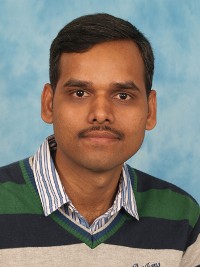Intergenerational influence on fertility preferences of young women in rural Bihar, India
Introduction
A wide array of studies, mainly on developed countries, has shown intergenerational transmission with respect to reproductive preferences and behaviors. The principle of linked lives [1] states that parental behavior during their children’s life course significantly influences both the desires and behaviors of the children into adulthood. Empirical evidence has confirmed that people learn and incorporate the preferences and behaviors of others. Research on developing countries has shown that living in an extended family is associated with higher fertility [2], but little is known about intergenerational transmission of fertility preferences in such contexts.
This paper examines the influence of mother’s and mother-in-law’s fertility behavior on young women’s fertility preferences in rural Bihar. As women interviewed in our survey are still of reproductive age, we focus on their fertility preferences.
Methodology
The present study is based on primary data collected during mid-2011 from 450 mother-in-law (MIL) /daughter-in-law (Index woman – IW) pairs, co-residing and sharing the same kitchen. The samples were selected from the Saran district of the state of Bihar in the eastern part of India. The desired family size of the IW is a dependent variable in the study and is classified into three categories: low, medium, and high. This variable is derived from the most widely investigated measures of desired family size: the Coombs scale, which is found to produce a more accurate indicator of fertility preferences compared to a single-item measure of ideal family size [3] [4] [5]. Descriptive statistics were used to examine the association between the desired family size of the IW and a set of background characteristics. Ordered logistic regression analysis was used to understand the influence of the older generation’s fertility and preferences on the desired family size of the IW.
Results
Our findings suggested that both biological mother’s and MIL’s fertility, as well as MIL’s preferred number of grandchildren, have an independent and significant positive influence on the desired family size of the IW. However, when other background variables are taken together, only the influence of the MIL’s preference remained significant. Among the other predictors, mother’s and individual education have an inverse and significant influence on the desired family size of the IW. Where the IW has much higher education than her mother-in-law, the ideal family size becomes smaller.
Conclusions
Two important conclusions could be drawn based on the findings. First, social pressure has significant influence on the fertility preferences of an individual after accounting for the socioeconomic context. Second, index women with much higher education are more independent in their decision making on childbearing.
References
[1] Easterlin, R (1978). The economics and sociology of fertility: A synthesis. In: Easterlin R (ed) Historical Studies of Changing Fertility. Princeton University Press, Princeton, NJ, USA.
[2] Elder, GH (1977). Family history and the life course. Journal of Family History 2(4):279-304.
[3] Jennings JA, Sullivan AR, Hacker JD (2012). Intergenerational transmission of reproductive behaviour during the demographic transitions. Journal of Interdisciplinary History 42(4):543–569.
[4] Axinn WG, Clarkberg ME, Thornton A (1994). Family influences on family size preferences. Demography 31(1):65–79.
[5] Coombs LC (1974). The measurement of family size preferences and subsequent fertility. Demography 11(4):587–611.
Supervisors
Valeria Bordone and Raya Muttarak, World Population, IIASA
Note
Abhishek Kumar of the International Institute for Population Sciences (IIPS), Mumbai, India, is an Indian citizen. He was funded by IIASA’s Indian National Member Organization and worked in the World Population (POP) Program during the YSSP.
Please note these Proceedings have received limited or no review from supervisors and IIASA program directors, and the views and results expressed therein do not necessarily represent IIASA, its National Member Organizations, or other organizations supporting the work.
Further information


